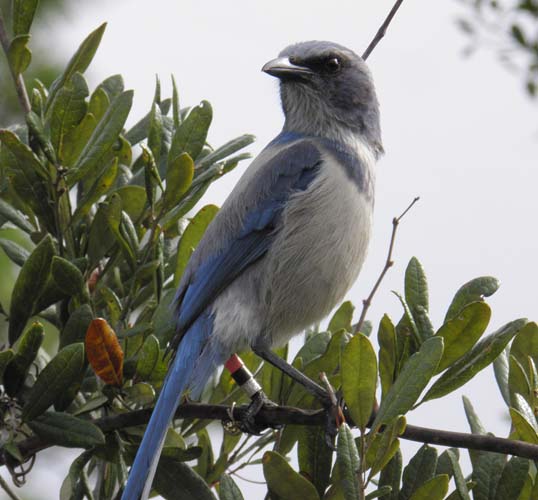
SEBASTIAN — The Sebastian City Council Wednesday night was split in its discussion of whether or not to allow conservationist Jane Schnee to have a prescribed burn on her Bristol-Barber scrub-jay habitat. Instead of voting the request up or down, the Council decided to get more information and put off a decision until later.
Schnee requested a controlled burn on a portion of the 10-acre site as the final step to restoring the land, which had once been earmarked for multi-family residential development.
After buying the property in 2011, Schnee has worked to remove invasive plants and other foliage that don’t conform to scrub-jay habitat.
Armed with three officials from the US Fish and Wildlife Service and the Division of Forestry, Schnee tried to get the Council’s support for the burn. However, concerns from nearby residents about safety and air quality was enough to put a temporary stop to the request.
Mayor Bob McPartlan said he supports the conservation effort but safety remained a big concern. He raised the specter of embers being carried on the wind to a neighbor’s home and landing in the rain gutter.
Fellow Councilman Jerome Adams agreed.
“I’m glad to hear all these precautions,” Adams said, but he was still concerned with the proximity of the would-be fire to the residences.
“It’s something I can’t shake,” he said, adding that for all the precautions, there is always that one chance. “I don’t feel comfortable with that one chance.”
Vice Mayor Don Wright and Councilwoman Andrea Coy voiced support for Schnee’s request, noting that the fire would be conducted by professionals and would be monitored.
“It’s the simplest little project to complete,” Wright said of burning the targeted three acres on the site. The potential for the fire to get out of control is “almost nothing.”
“This is not some haphazard operation,” Wright added.
Echoing comments made by the wildlife officials, Coy reminded her fellow council members that having a prescribed burn on the site would help protect the nearby homes in the event lightning were to strike the scrub-jay property.
“I have a great fear of fire,” Coy said, but the controlled burn could protect the neighbors.
Dale Armstrong, from the Florida Forestry Service, said Florida is the lightning capitol of North America and, as such, it’s a matter of time before lightning strikes Schnee’s property. By having a prescribed burn on the site first, materials that would have otherwise fed a lightning-struck wildfire would not exist and fire breaks around the property would already be in place.
City Manager Al Minner told the Council that it was staff’s recommendation to not approve the burn request. He explained that Schnee’s property is small and too close to homes.
Under the city’s fire code, Minner said Schnee’s property doesn’t qualify.
“It doesn’t pass the litmus test” to be approved, he said.
Tim Towles, of the US Fish and Wildlife Service, told the Sebastian City Council that Schnee has done everything but the most important task to make her property hospitable to the Florida scrub-jay – burn it.
“Fire is necessary to maintain scrub property,” Towles said. “Really, there is no alternative.”
The fire eliminates dead plant material, stimulates regrowth, returns nutrients to the soil, and protects against wildfires.
Deadlocked on a decision, the Sebastian City Council found a compromise – draft a prescribed burn plan for the property showing how the fire would be contained and monitored and safety ensured, and get a recommendation from Indian River Fire Rescue.
Armstrong said he would expect the prescribed burn – if approved – would be done sometime in the late summer, fall or winter, depending on weather conditions. The Council did not provide a time-frame for returning with the burn plan or Fire Rescue’s recommendation.



